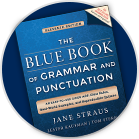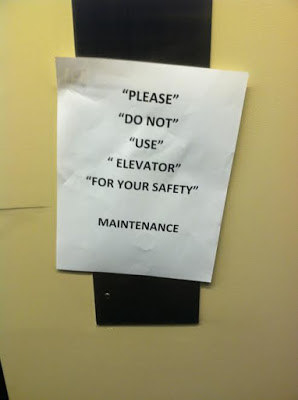|
Having trouble viewing this message? Click here to view it online.
To unsubscribe or change contact details, scroll to the bottom and follow the link.
|



|
Diving Back into Dialogue:
Part I
|
|
We receive many questions from our readers about writing dialogue. We thought now would be a good time to revisit the subject; in doing so, we hope to answer questions some of you might still have.
Format and Punctuation
Each new line of dialogue is often indented on each line, enclosed in quotation marks, and attended by an attribution that identifies each speaker. Once the speakers have been established within a particular exchange, their attributions may be dropped until needed again for clarity. Each change in speaker also begins a new line.
Example:
"Please open the window," Marianne said. "I want to hear the rain fall."
"But what if it dampens the floor?" Robert replied.
"Such minutiae mean nothing to me now, not after what happened today. Please. Open it."
"As you wish."
He went to the window and slid it up. They listened to the drops as they pattered on the pavement outside.
"Thank you," she said, barely above a whisper.
He looked down and then up.
"As it suits you."
If a speaker's dialogue continues beyond one paragraph, an opening quotation mark is placed at the start of each new line. The closing quotation mark appears at the end of the dialogue.
Example:
"I want to work again," Marianne said. "I want the car to start. I want the fridge to be more than quarter-full.
"I want the school to reopen, the park to be cleaned, the community to welcome new people again.
"Most of all, I want us all to have hope. Real, so-thick-you-can-hold-it hope."
Punctuation
In the examples above, you'll note that a comma separates the quote and the attribution. The comma also is placed inside the quotation marks. When the attribution precedes the dialogue, the comma appears after the attributing verb (and before the quoted material).
Examples:
Robert replied, "But what if it dampens the floor?"
Barely above a whisper, she said, "Thank you."
Dialogue also can be introduced by a colon.
Example:
Robert halted and spun around: "Is that true?"
If we wish to interrupt a thought or statement within dialogue, we can use ellipsis marks.
Example:
"Well, I'm not really sure," Marianne said. "It's … well … you know. I just want us to be … right again. The way we used to be."
We can insert an attribution mid-sentence in dialogue as well. We would separate it with commas.
Example:
"Such minutiae," Marianne said, now standing, "mean nothing to me now, not after what happened today. Please. Open it."
Attribution Verbs
We can use many different attributive verbs in describing our dialogue. Just a few include:
| added |
declared |
muttered |
responded |
whined |
| answered |
demanded |
observed |
screamed |
whispered |
| begged |
explained |
pleaded |
shouted |
yelled |
Examples:
"Whatever you say," he muttered.
"I'll be there at six," Natalie responded.
"If you take that route, you'll be at least an hour late," the mechanic explained.
While such verbs help to color dialogue and keep it moving, we should also aim to let the dialogue itself establish context and mood whenever possible. Choosing the right words and intonation in our dialogue frees us from having to over-rely on verbs to convey mood within conversation. In some cases, an attributive verb can be redundant.
Examples:
"But, I ask of you, give me another chance and I will not disappoint you," Robert said. [We could use pleaded or begged, but the character's words themselves contain the plea, so we let him just "say" it.]
"No! I will not let this continue one more day!" Marianne said. [We could use yelled, screamed, or shouted for extra emphasis, but we would also be fine with said, as we can see Marianne is raising her voice.]
In Part II of Diving Back into Dialogue, we'll take a closer look at writing internal dialogue to communicate what characters are thinking rather than saying.
|
View and comment on this
article on our website.
|
|
Free BONUS Quiz for You!
Friend, because you are a subscriber to the newsletter, you get access to one of the Subscribers-Only Quizzes. Click here to take a Question Marks, Quotation Marks, and Parentheses Quiz and get your scores and explanations instantly!
We will be adding many more quizzes this year to our already substantial list of quizzes. If you have suggestions for topics we have not yet covered, please send us a message at help@grammarbook.com.
|
Hundreds of Additional Quizzes
at Your Fingertips
Subscribe now to receive hundreds of additional English usage quizzes not found anywhere else!
Teachers and Employers
Save hours of valuable time! You may assign quizzes to your students and employees and have their scores tallied, organized, and reported to you! Let GrammarBook.com take the hassle out of teaching English!
"Fun to test my skills."
"The explanations really help ... thanks!"
"I can select the quizzes to assign to my students, and then the results are reported to me automatically!"
|

|
Don't need all the quizzes?
You can now purchase the same quizzes individually for ONLY 99¢ each.
Purchase yours here. |
If you think you have found an error in a quiz, please email us at help@grammarbook.com
|
 |
The Blue Book of Grammar and Punctuation
by Jane Straus, Lester Kaufman, and Tom Stern |
The Authority on English Grammar! Eleventh Edition Now Available
An indispensable tool for busy professionals, teachers, students, homeschool families, editors, writers, and proofreaders.
Available in print AND as an e-Book! Over 2,000 copies are purchased every month!
The publisher of The Blue Book, Jossey-Bass, A Wiley brand, is offering a 35 percent discount for those of you who order the book through Wiley.com. Shipping and tax are not included. Simply go to bit.ly/1996hkA and use discount code E9X4A.
Offer expires December 31, 2020.
|
Wordplay

An overdose of quotation marks.
|
 |
English In A Snap:
68 One-Minute English Usage Videos FREE |
Learn all about who and whom, affect and effect, subjects and verbs, adjectives and adverbs, commas, semicolons, quotation marks, and much more by just sitting back and enjoying these easy-to-follow lessons. Tell your colleagues (and boss), children, teachers, and friends. Click here to watch.
|
|